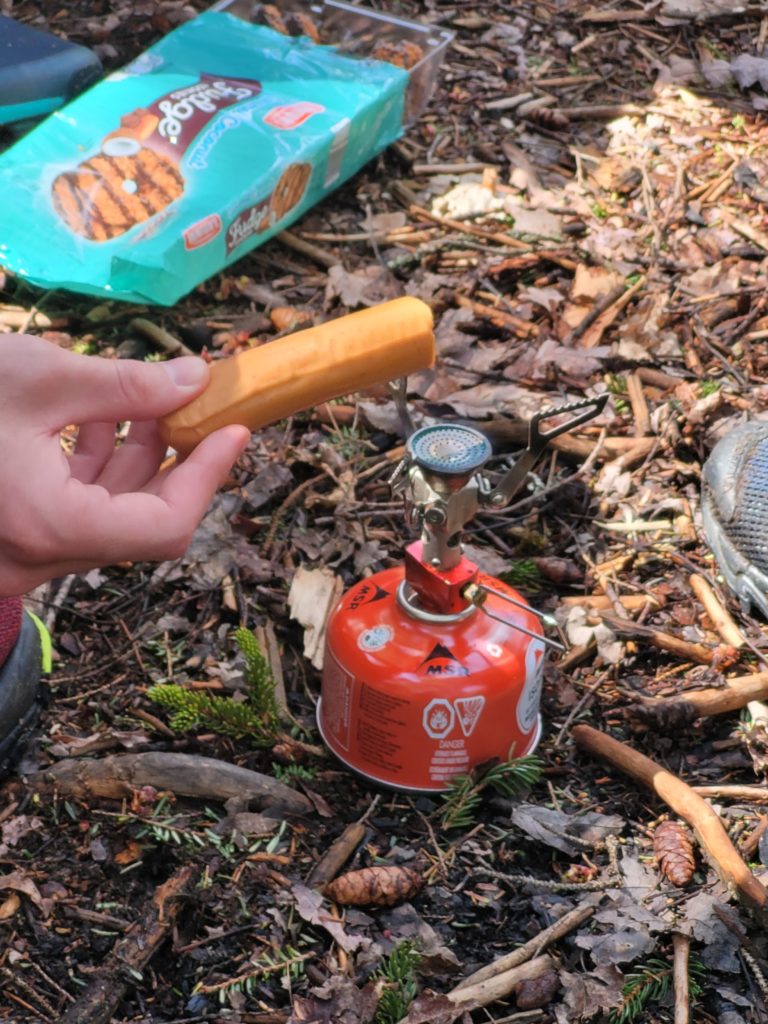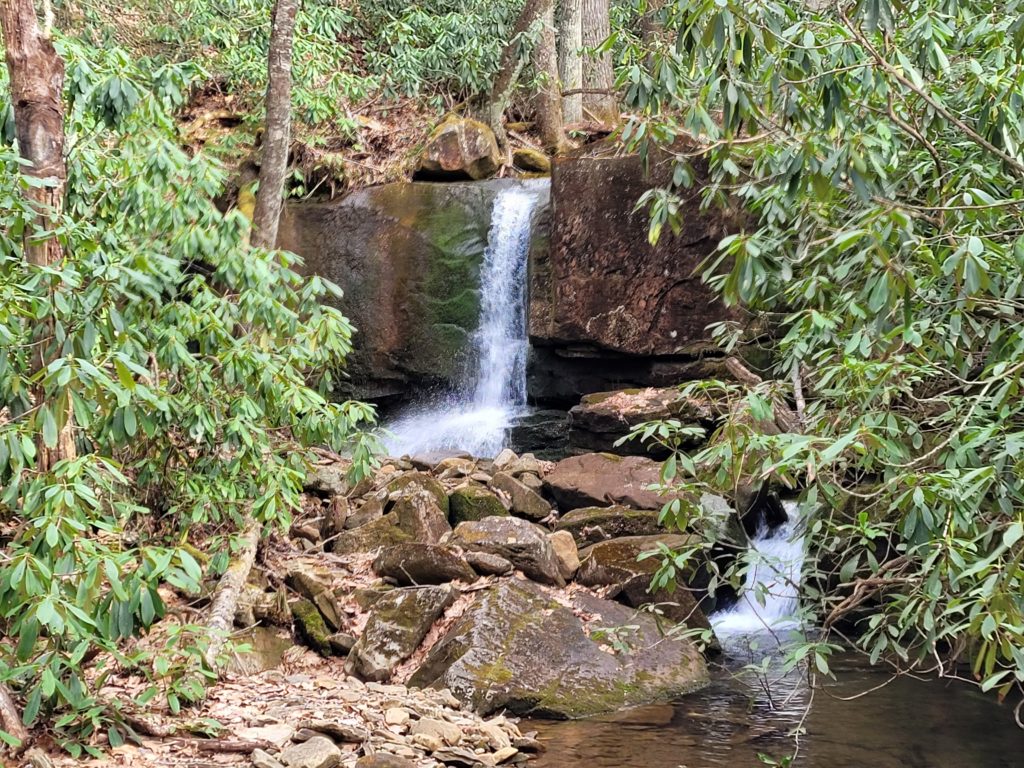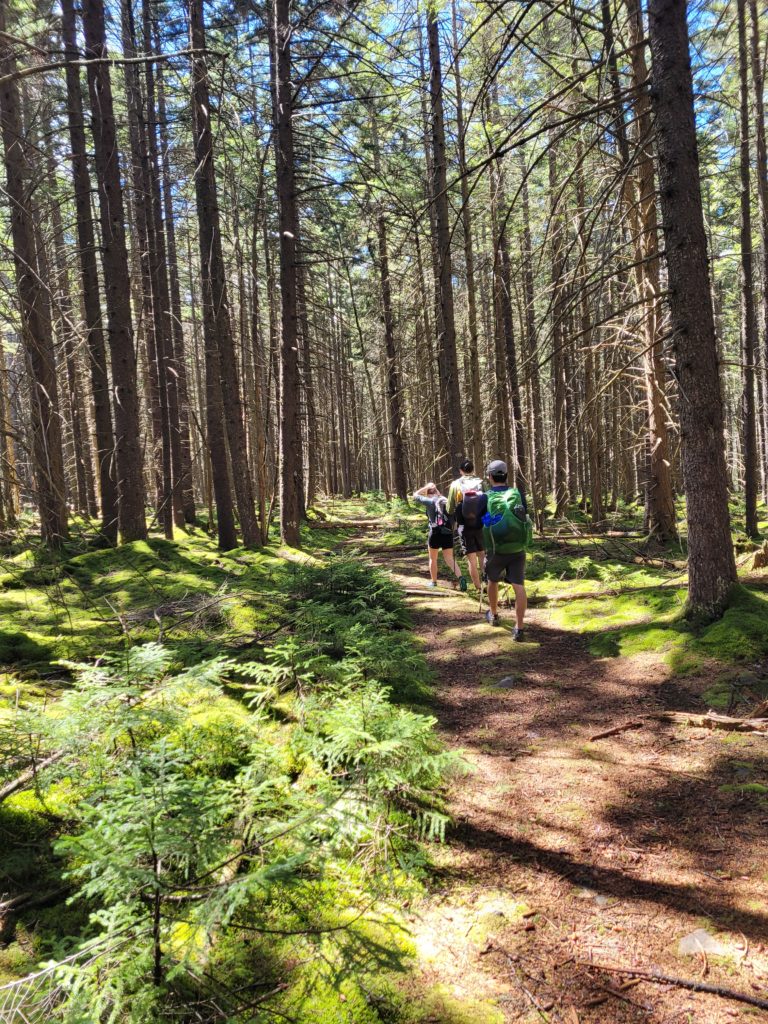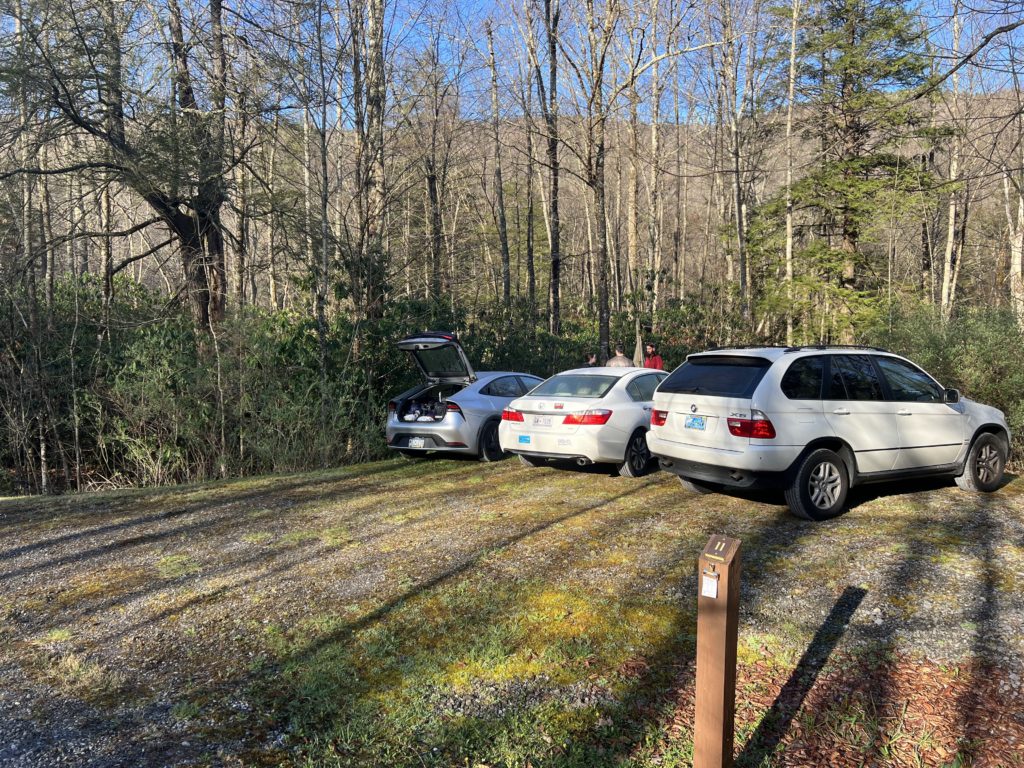It’s hard to believe it has been nearly a year since we began hiking AT. Amy and I enjoyed a long winter season of relaxing and regaining all of the weight we previously lost, but felt it was time to plan our first hike since our descent of Katahdin. We missed everything about our life in the mountains: the scenery, the activity, and most of all, the people. Determined to stay in touch with the friends we made during our thru-hike, we reached out to Season Pass and Wraps to see if they were up for playing the role of weekend warrior. Season Pass recently moved to Asheville, NC and Wraps is living in in Richmond, VA. Turns out that WV is right smack dab in the middle of those two cities and our home in Pittsburgh, PA. Since WV is criminally underrepresented by the Appalachian Trail anyway, planning a loop in the Mountaineer State to kick off the 2023 season seemed like too good of an opportunity to pass up.
The point of this trip was purely to reunite with friends and reminisce on the good times we had on trail. Since we have reached the point where other people in our lives are no longer interested in stories of our thru-hike, we would collectively serve as an outlet for each other to reflect, gossip, and battle the vicious onset of post-trail depression. We had little interest in a challenging hike and instead chose a location that where we could be as lazy as possible, planning what barely even constitutes as a backpacking trip. Surely, four seasoned hikers could handle the meager mileage of a short loop hike in the Cranberry Wilderness with ease, right?
Where: The Cranberry Wilderness in the Monongahela National Forest, central West Virginia
When: 4/14 – 4/16
Distance: 18 miles
Conditions: 40s to mid 70s, rainy and overcast
Route: https://caltopo.com/m/271TE
Photos: https://photos.app.goo.gl/Rdgk5UhKHkgfxYRL7
Gear: https://lighterpack.com/r/ytu6pt
Pre-Trip Information
Overview
The Cranberry Wilderness is a 47,815-acre U.S. wilderness area in the Monongahela National Forest of southeast West Virginia. Its name derives from the nearby Cranberry Glades as well as from the Cranberry River and Cranberry Mountain. In addition to being wilderness, it is a designated black bear sanctuary. There is a small trail network that is sufficient to form a variety of hiking loops, so it is a great location for a remote weekend trip.
Permits
There are no permits needed to hike or backcountry camp within the Cranberry Wilderness.
Water
Water is scarce along the North-South Trail, with only a few seemingly unreliable streams on the western half and along the short segment of the loop along the Laurelly Branch Trail. The Middle Fork Trail follows along the Williams River with frequent access points.
Transportation
The Cranberry Wilderness is roughly four hours driving from all of Asheville, Richmond, and Pittsburgh. It is located deep within the sprawling Monongahela National Forest, so the majority of the drive in any direction is along nicely paved, exceptionally scenic, winding two-lane roads. Though we expected at least some dirt or gravel, the roads were pristine for the entire journey. Seriously, great job West Virginia. The only concern is that the is no cell service for at least fifty miles north of the trailhead. When traveling independently, there is always the risk of one or more party not arriving and having no idea what happened to them. Fortunately, the pins on Google Maps are surprisingly accurate and it was no problem rendezvousing at Tea Creek Campground around 9:30pm Thursday night.

Day 1
North-South Trailhead to Middle Fork Williams Rivers
Distance: 11.2 miles
Elevation: +870′ -2472′
We built a fire at our car campsite at Tea Creek Campground on Thursday night. Season Pass, Wraps, Spout, and I bullshitted together, cracked some beers, and made light conversation for a few hours. We mostly spent our time sharing memories, but also found ourselves returning to Season Pass’ clean shaven face (a stark contrast from the rugged mountain man we remembered). Spout brought her 2022 Hiker Yearbook so she could have it signed like it was the last day of high school. We drank some orange sodies and were pleased to learn that Wraps was still addicted vegan glizzies that he happily roasted over the fire.

The following morning, we slept in until 9:00am and took our good ol’ time packing up camp. We were in absolutely no rush whatsoever and that was something we did not get to experience for the entirety of the AT. There is something to be said for aimless backpacking, and this trip felt like something of a cross between a shakedown and a victory lap. Driving three separate vehicles, we caravan-ed a few minutes from Tea Creek Campground to the North-South Trailhead on WV 150 where we began our hike in light drizzle. The drizzle opened up to a steady rain as soon as we chose to head straight on the North-South Trail at the the three-way intersection. I quickly realized that it wasn’t the bright and sunny days that I missed the most about the AT (you can get those walking around the city). It is the cold rain that forces you into a state of discomfort where you feel most alive. Damn, did it feel good.

The terrain was a level of relaxing we had previously only experienced in the Shenandoah’s, save the fact it was unmarked, unmaintained, and often overgrown. Spout and I were slightly worried at how our bodies would handle hiking after six months of living a sedentary lifestyle. I suppose we never really found out because there were no notable climbs for the entire loop and we easily breezed through the first four miles despite the weather. Our group took a long break at a random campsite, tackled another handful of miles, then took a long lunch at another campsite. We relished eating the same junk food we had eaten for months, turns out that pepperoni rolls and sour patch kids never get old.

We turned right onto Laurelly Branch Trail and descended to the Williams River over several long switchbacks. Crossing the river demanded some adept rock-hopping ability. Once across, a man who was solo camping told us about a great campsite a half a mile down the Middle Fork Trail. It required us to cross the river again, but paid dividends with a lovely waterfall stemming from the Hell for Certain Branch behind a wide, flat area with space for several tents. We built camp and lit another fire blazing fire. Being lost in the backcountry with good company was a familiar paradise I had too often taken for granted on the AT.

I packed several additional luxury items for this hike, including a trekker chair kit that transforms my sleeping pad into a literal throne. Spout carried her brand new stove, the Soto Windmaster, and a fuel canister. Wraps and Season Pass laughed at us struggling with the setup, saying it was something you’d expect to see during someone’s first ever backpacking trip. Eventually, we managed to boil some water and we ate our favorite dehydrated chicken and waffles around the flames. We hung out for several hours until darkness fell and some raindrops scared us into our tents.

I found out that an ember from the fire burned a hole into another new piece of gear for me, my Enlightened Equipment Torrid jacket. Fortunately, it was easily patched with a piece of Tenacious Tape. What was not so easily patched was a leak in my sleeping pad that formed after I setup my chair on a piece of broken glass left behind by some sorry West Virginian redneck. I have dealt with leaks before, but this one had my pad go from fully inflated to flat in maybe twenty minutes. In other words, I spent the night shifting miserably on the cold ground, bagging only a few hours of restless sleep.

Day 2
Middle Fork Williams Rivers to North-South Trailhead
Distance: 7.3 miles
Elevation: +1671′ -74′
In the morning our group had a few more surprises. First of all, everyone was slightly sore in the hips, which we found quite amusing. Secondly, Wraps had also fell victim to a stray ember scorching his puffy jacket. Finally, I found a tick had firmly lodged itself into my buttocks. Spout managed to remove it without plucking off the head, but the bite turned an ugly, dark purple. I’ve always felt that hardships like these are what makes backpacking unique. It’s gritty and things rarely play out according to plan, but overcoming regular small challenges is immensely rewarding (though I wouldn’t consider Lyme disease a small challenge).
[No, I’m not posting a picture of my butt on the internet]
Spout played Pass the Pigs with Season Pass and Wraps while I struggled to submerge my pad in the river and unsuccessfully patch the series of holes with leukotape. It was after noon by time we started hiking for the day, now heading back towards the trailhead along Middle Fork. The trail was gently graded uphill for seven miles. It was a pretty hike, and the sun had begun poking out of the clouds to make it a truly beautiful spring day.

Before we knew it, we turned right onto the North Fork Trail and finished the loop. It was only 3:00pm or so, but no one was particularly eager to continue hiking. I didn’t want to backcountry camp that night anyway, considering my pad was ruined. We hung out in the parking lot on folding chairs and sipped what beer still remained for an hour or two, then drove back to Tea Creek Campground.

We played some frisbee, listened to music, and had our third consecutive campfire that night. We discussed our future thru-hiking plans and asked what the heck Season Pass was going to do now that he already triple crown’d at 29 years old. As it got later, I went to sleep in the driver’s seat of our Prius (which was marginally less uncomfortable than the ground) and Spout decided to set up her pad in the trunk for some reason. This was a first for us and it went okay all things considered, save for an excessive amount of lung water condensing all over the interior when we woke up.

We hung around a bit longer in the morning, but everyone had a long drive ahead and we knew we couldn’t stay long. At length, we said our goodbyes. It seemed that this was an important reunion for all of us. Season Pass told us that he had never reconnected with any of his past “tramlies” from other thru-hikes, despite making the effort. It is difficult to transition from spending months overcoming a massive challenge together to seeing one another once or twice a year, but the real world is fast-moving and there never seems to be enough time for anything. The good part about hiking is that it tends to take you all over the world, and Spout and I have even more excuses to travel to North Carolina or Virginia to discover natural beauty and reconnect with friends from the best adventure of our lives.


